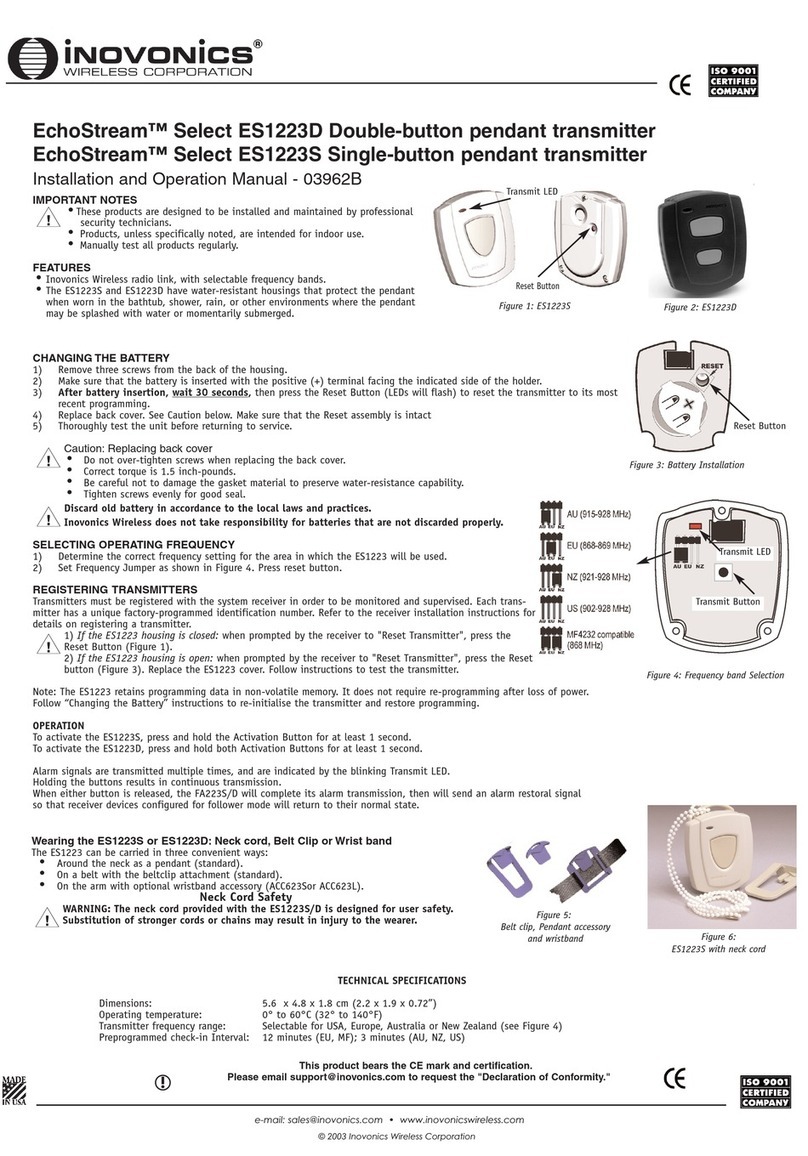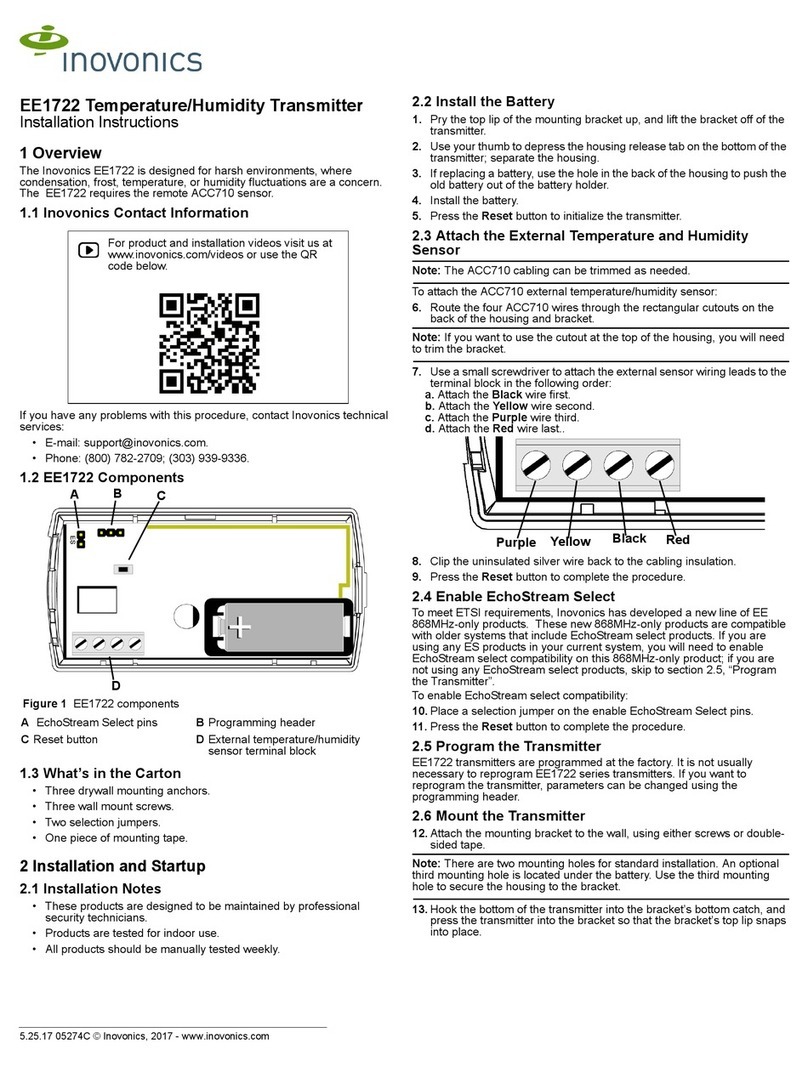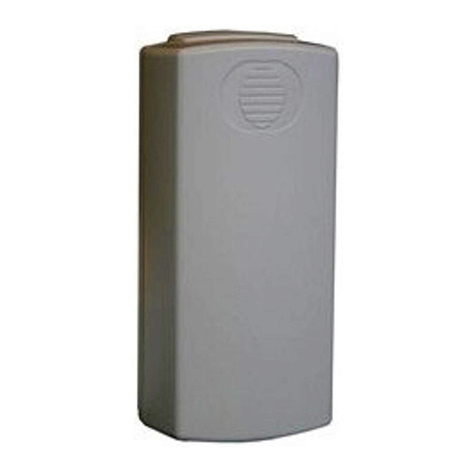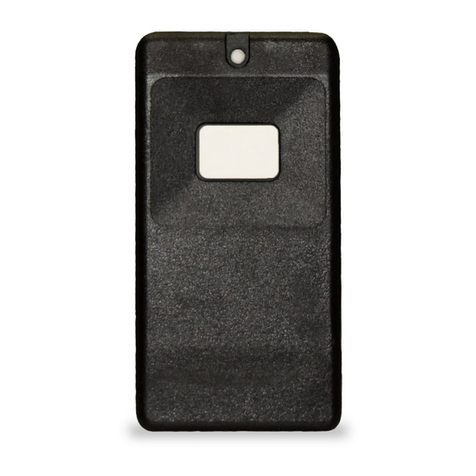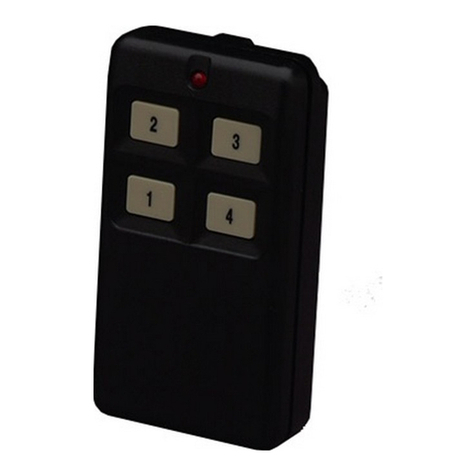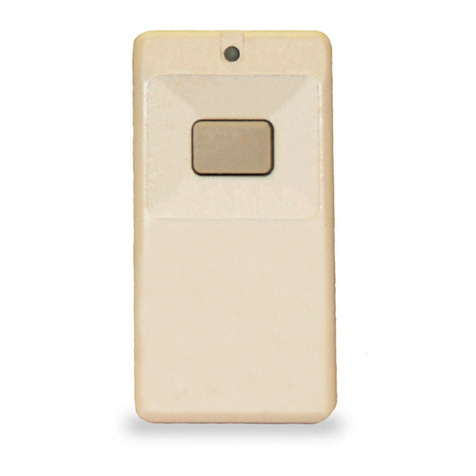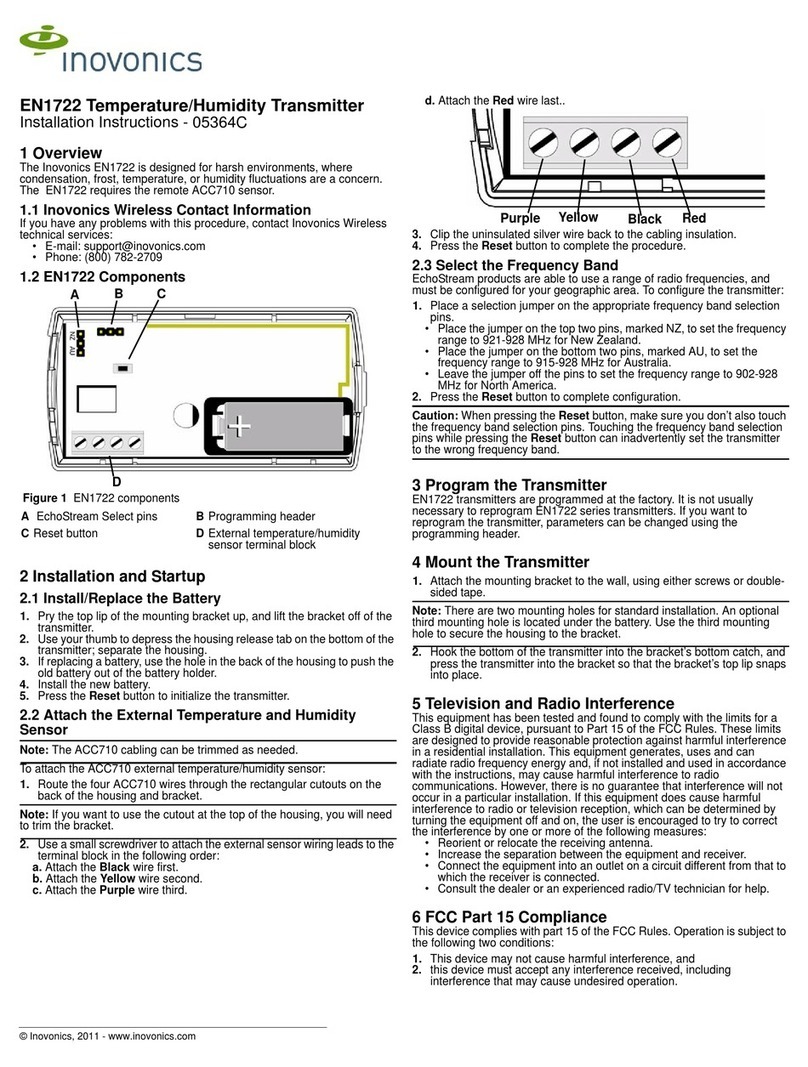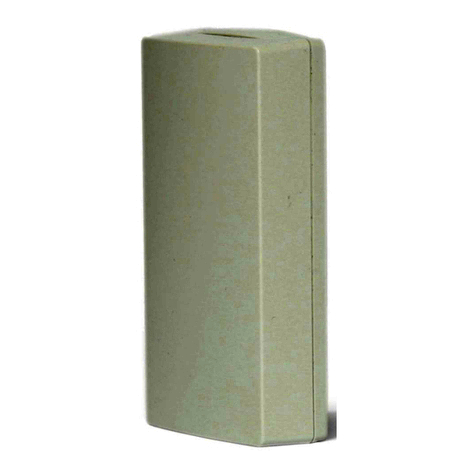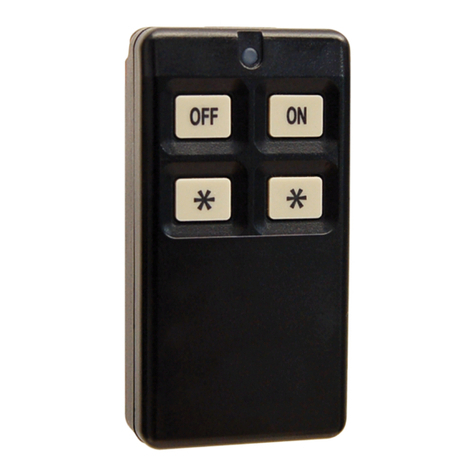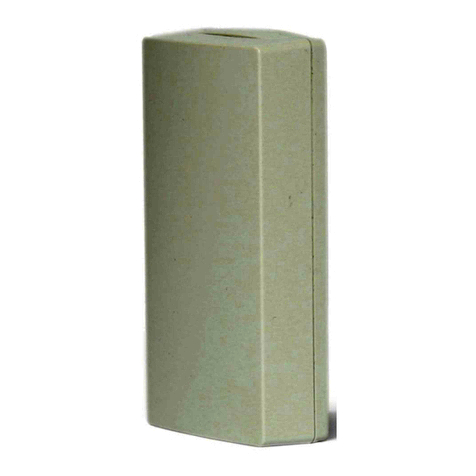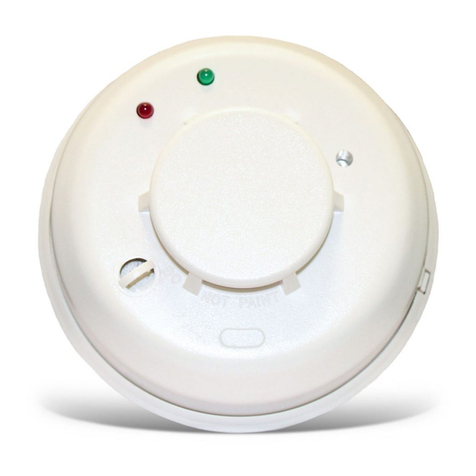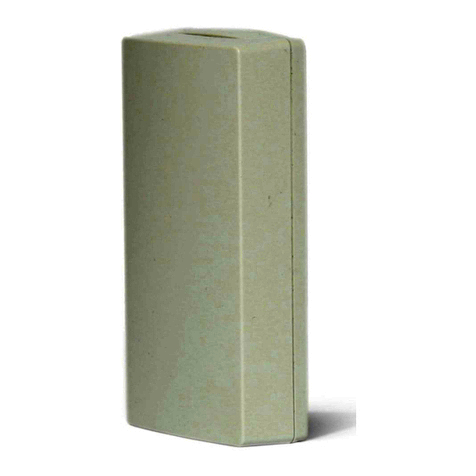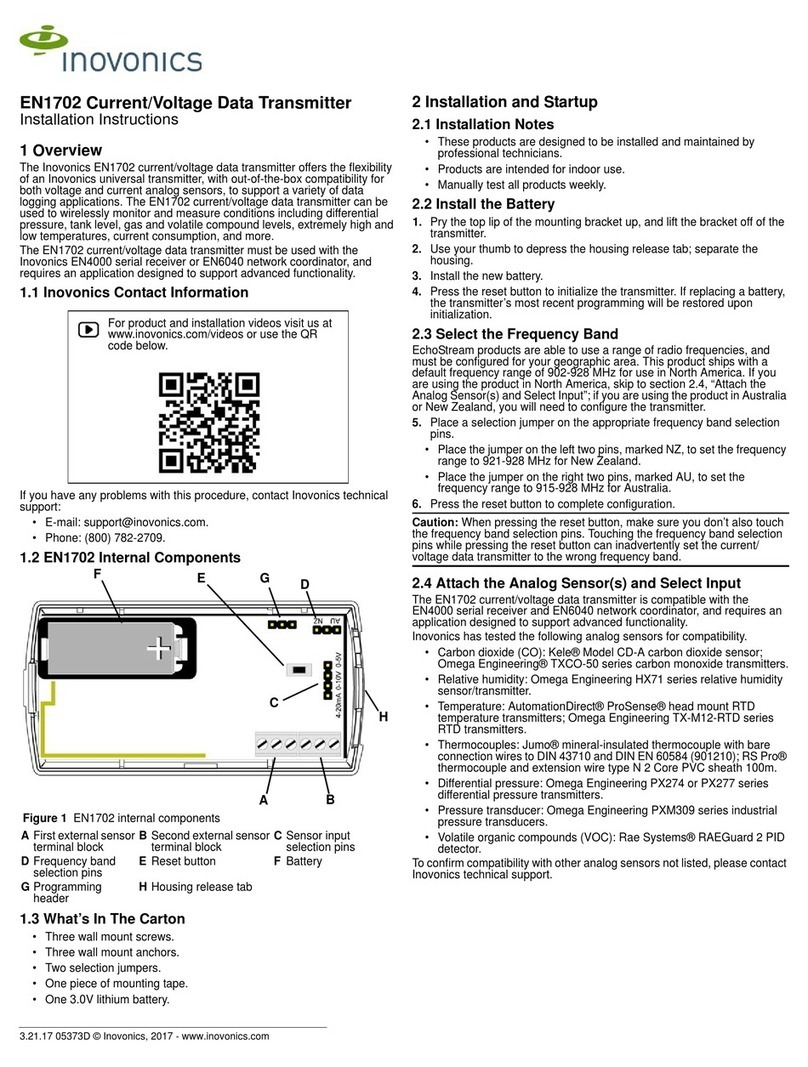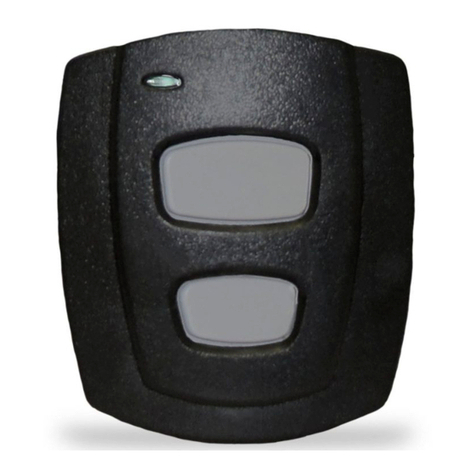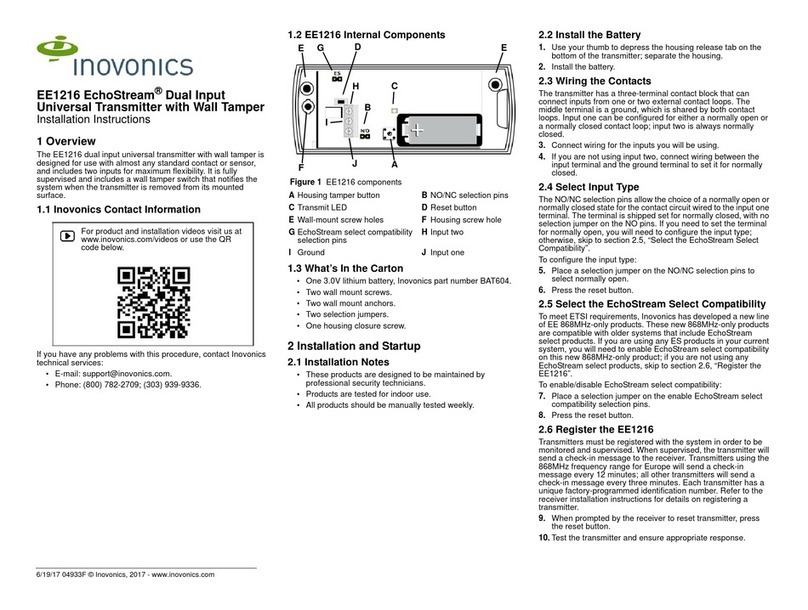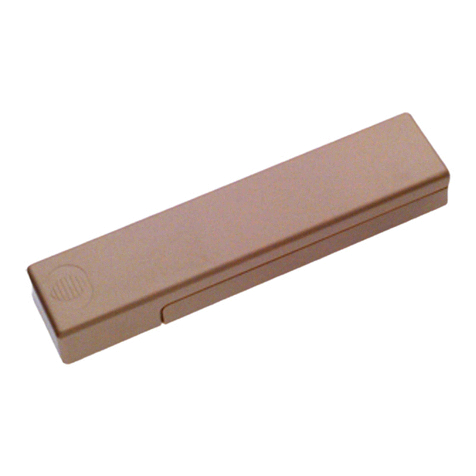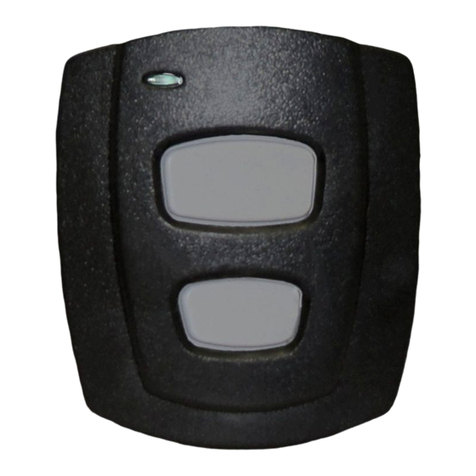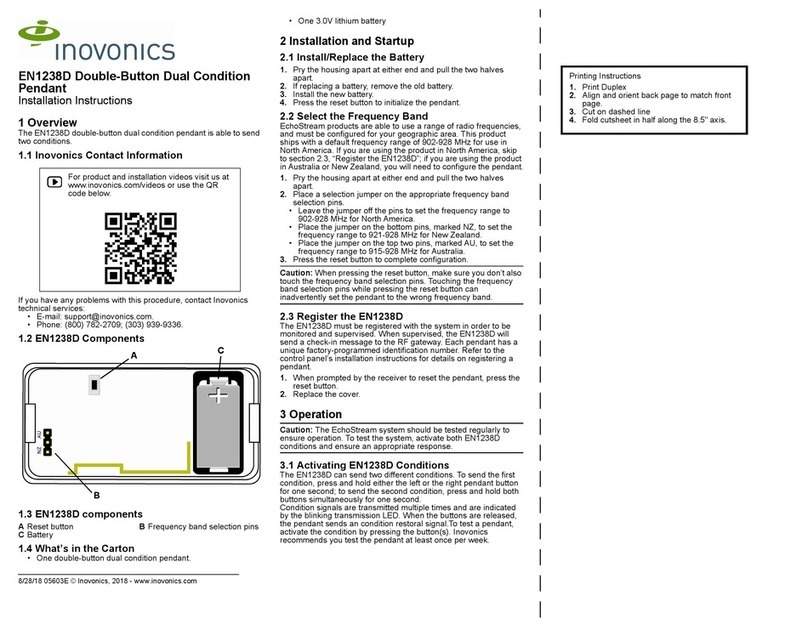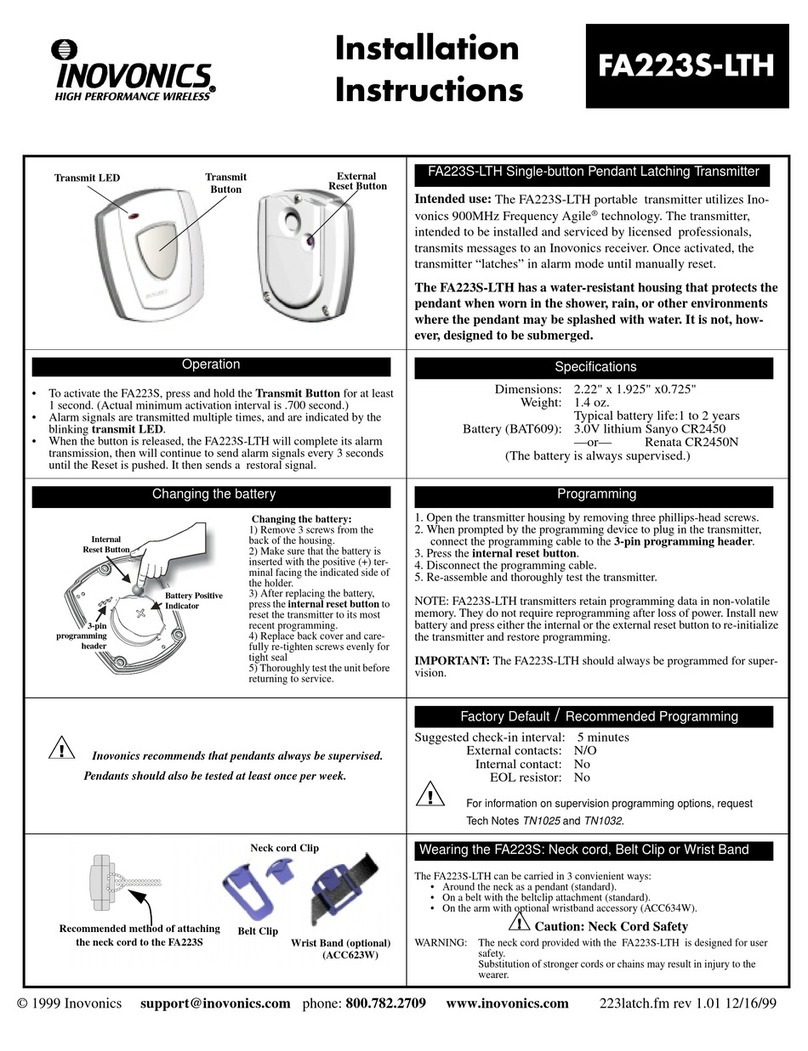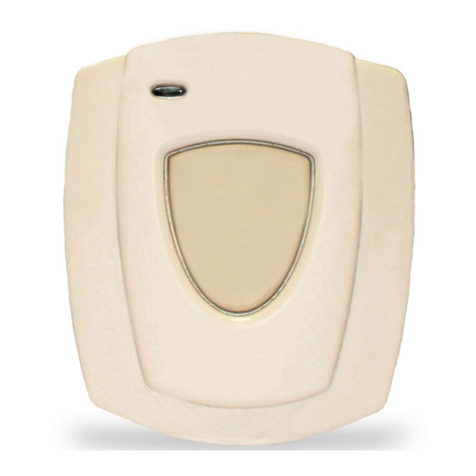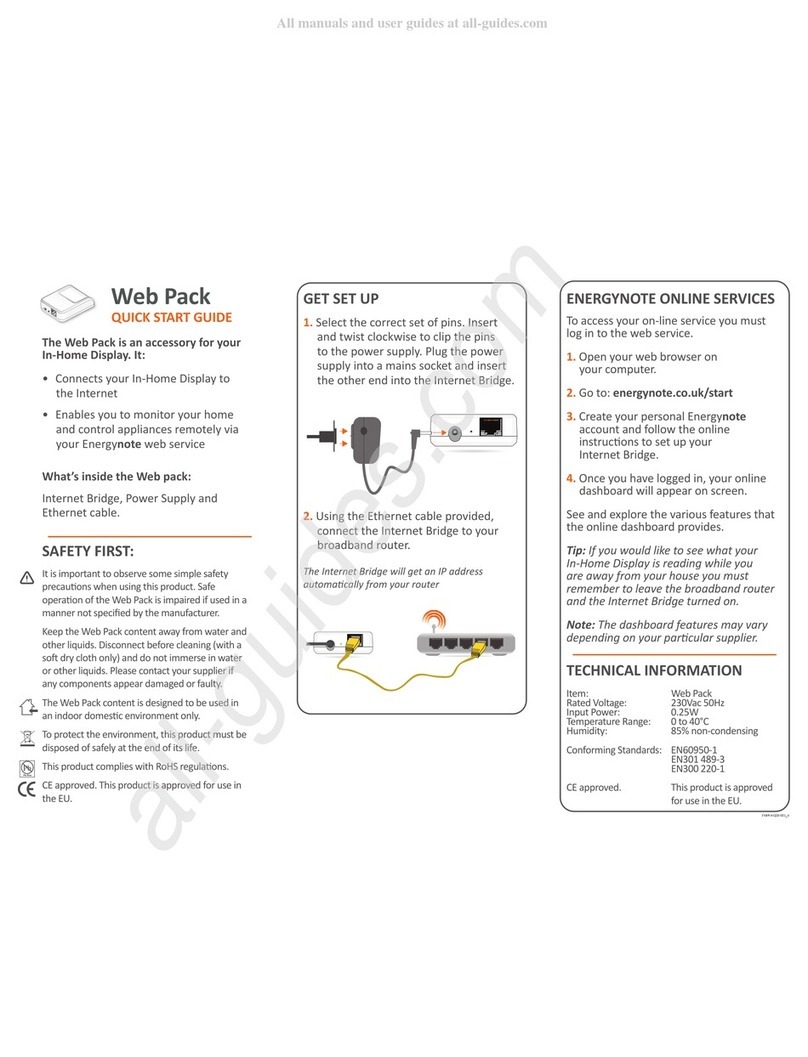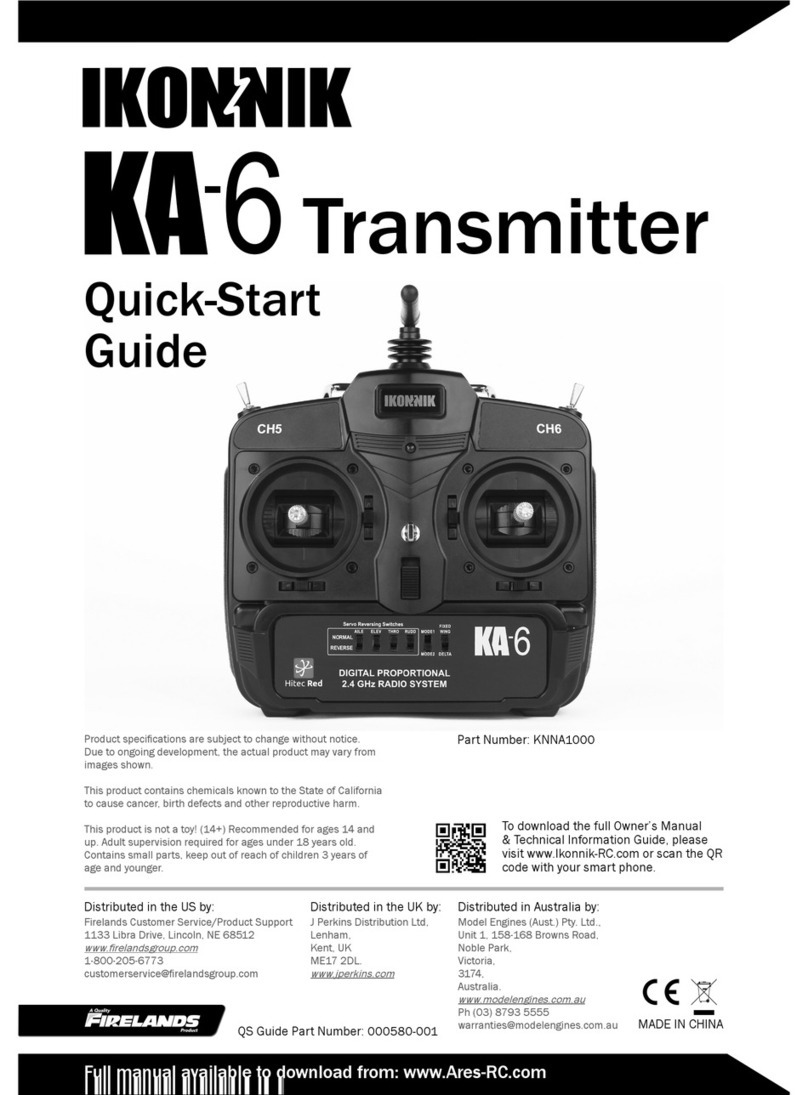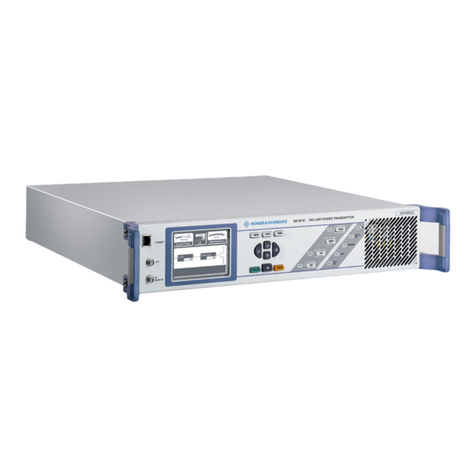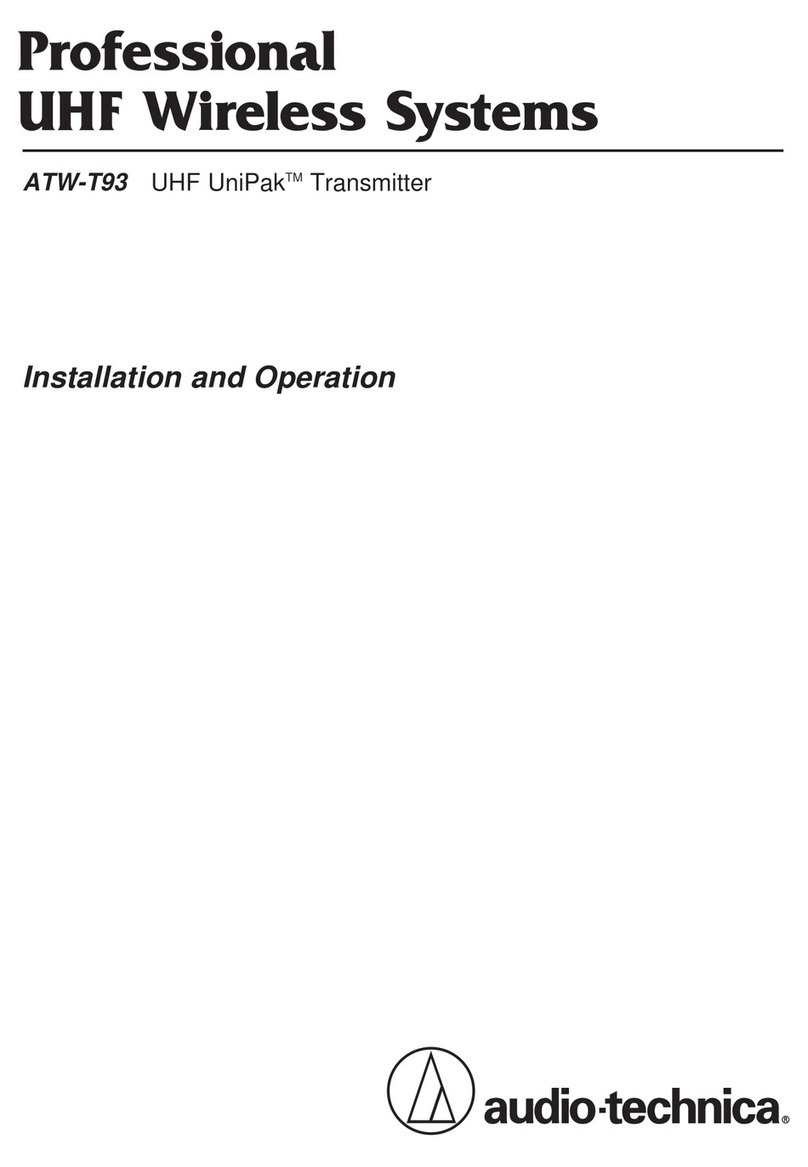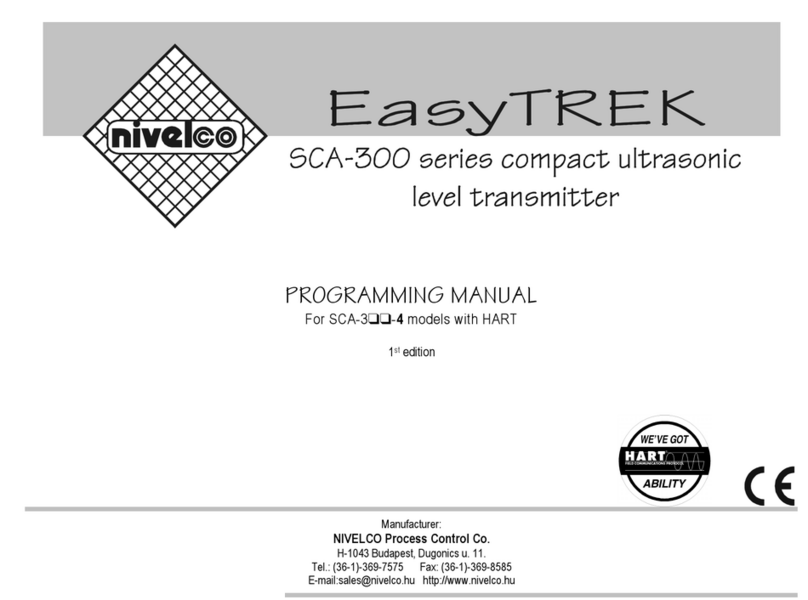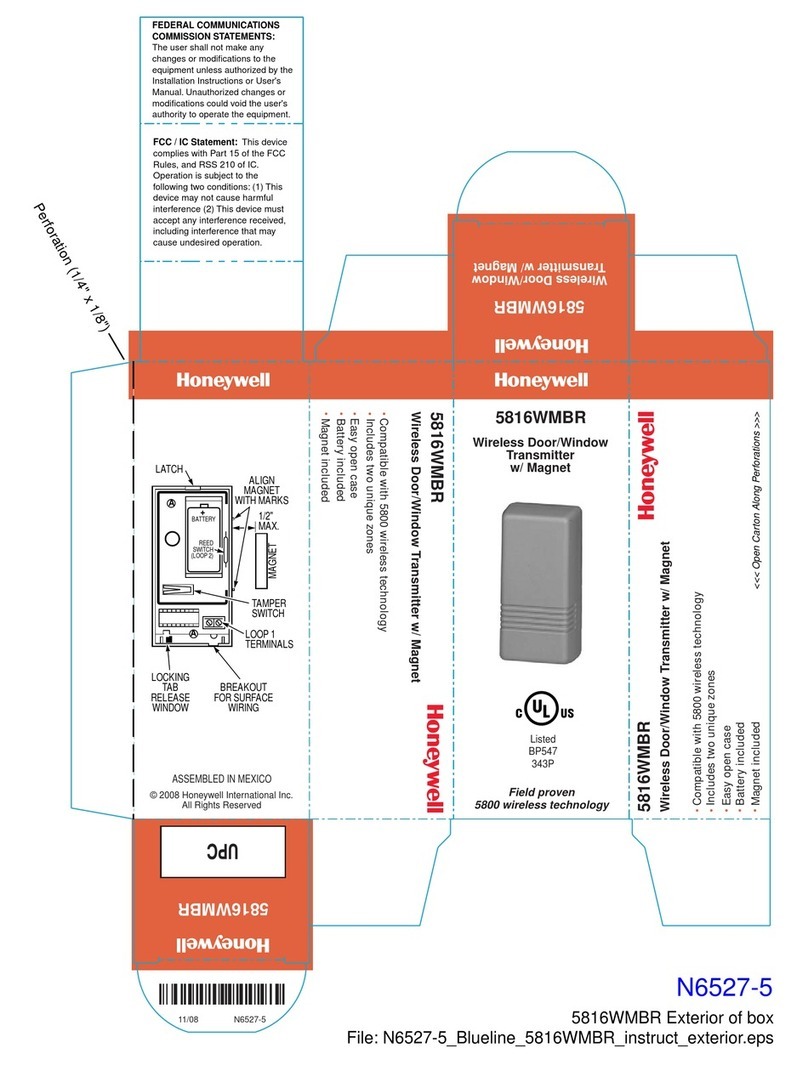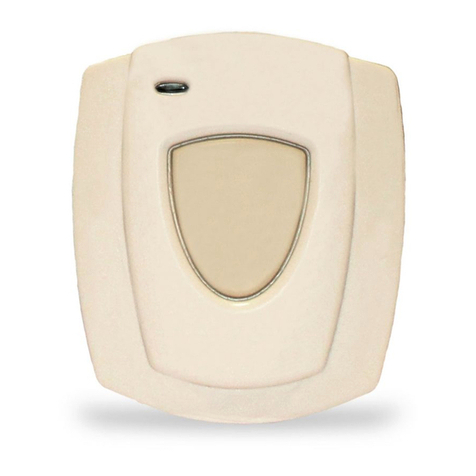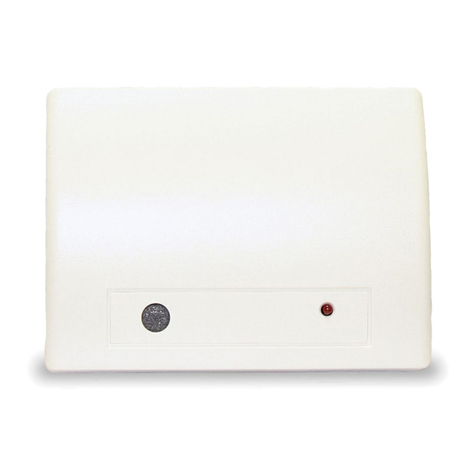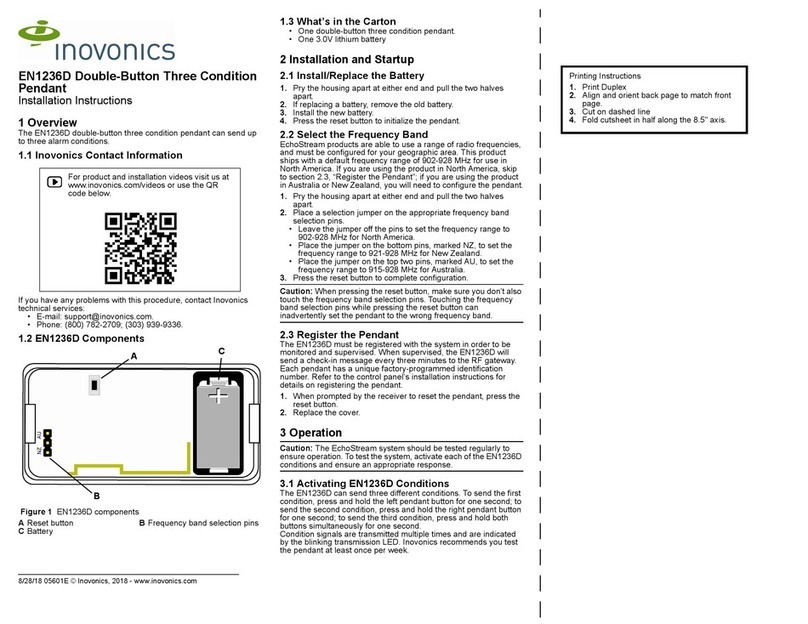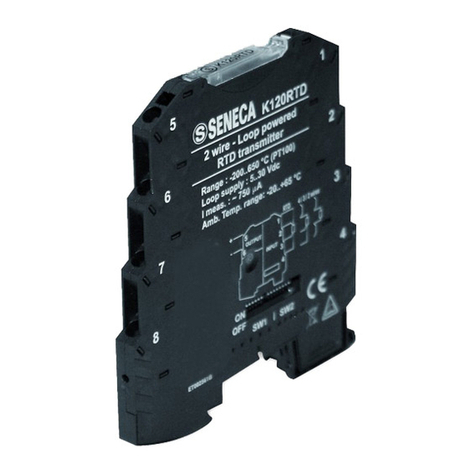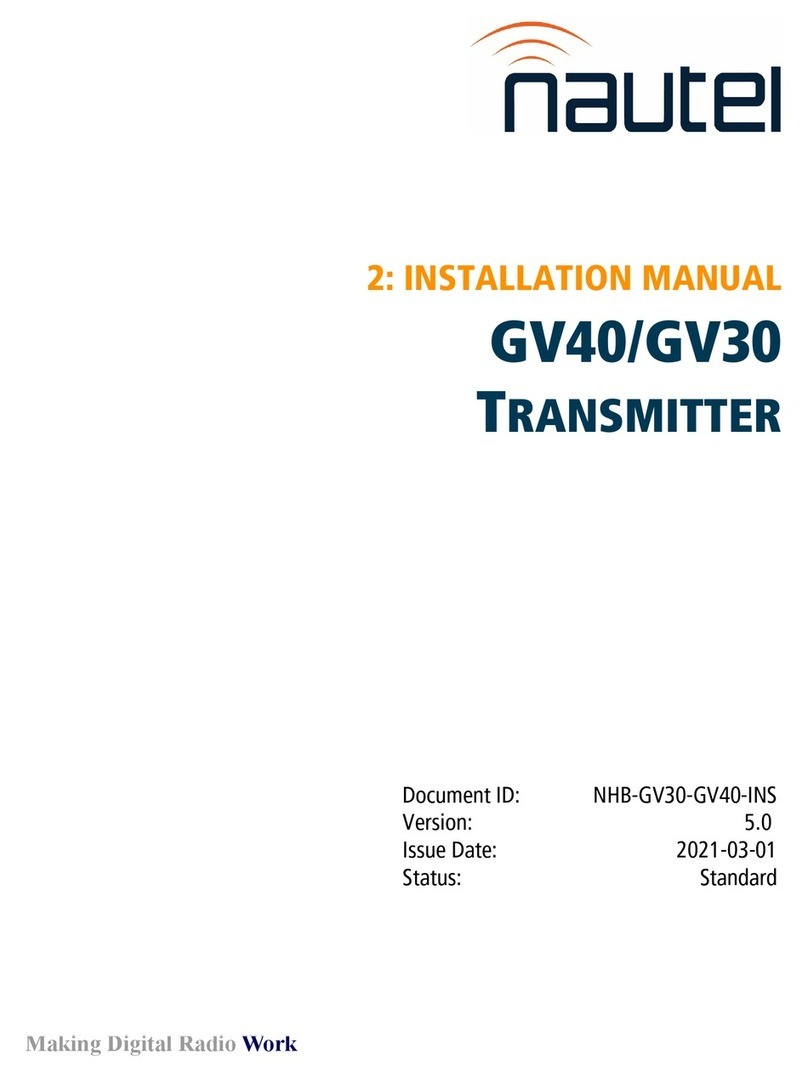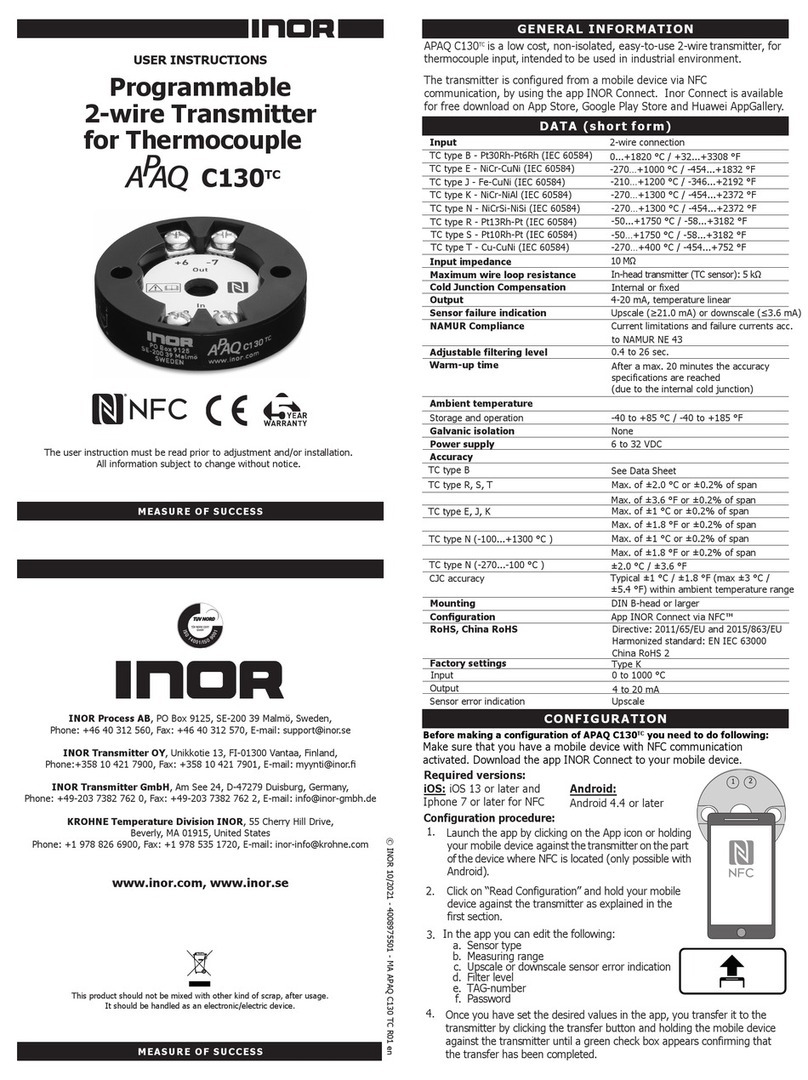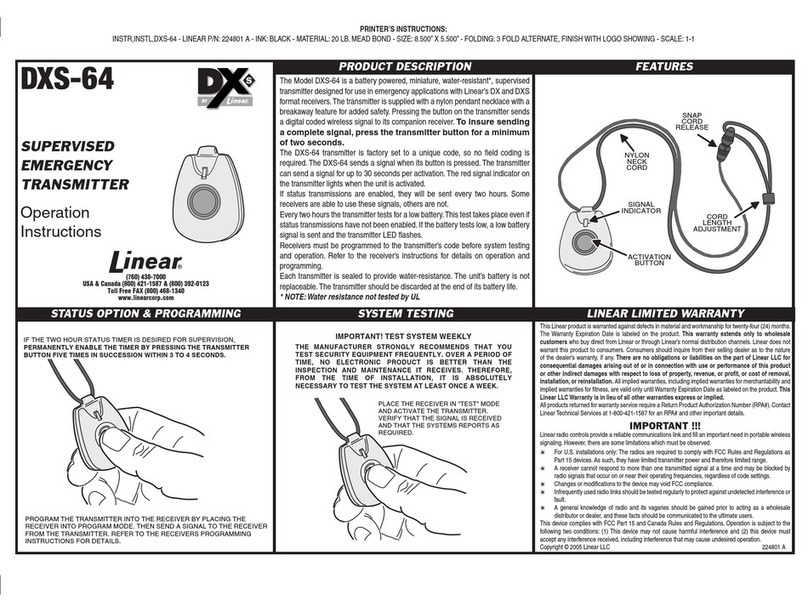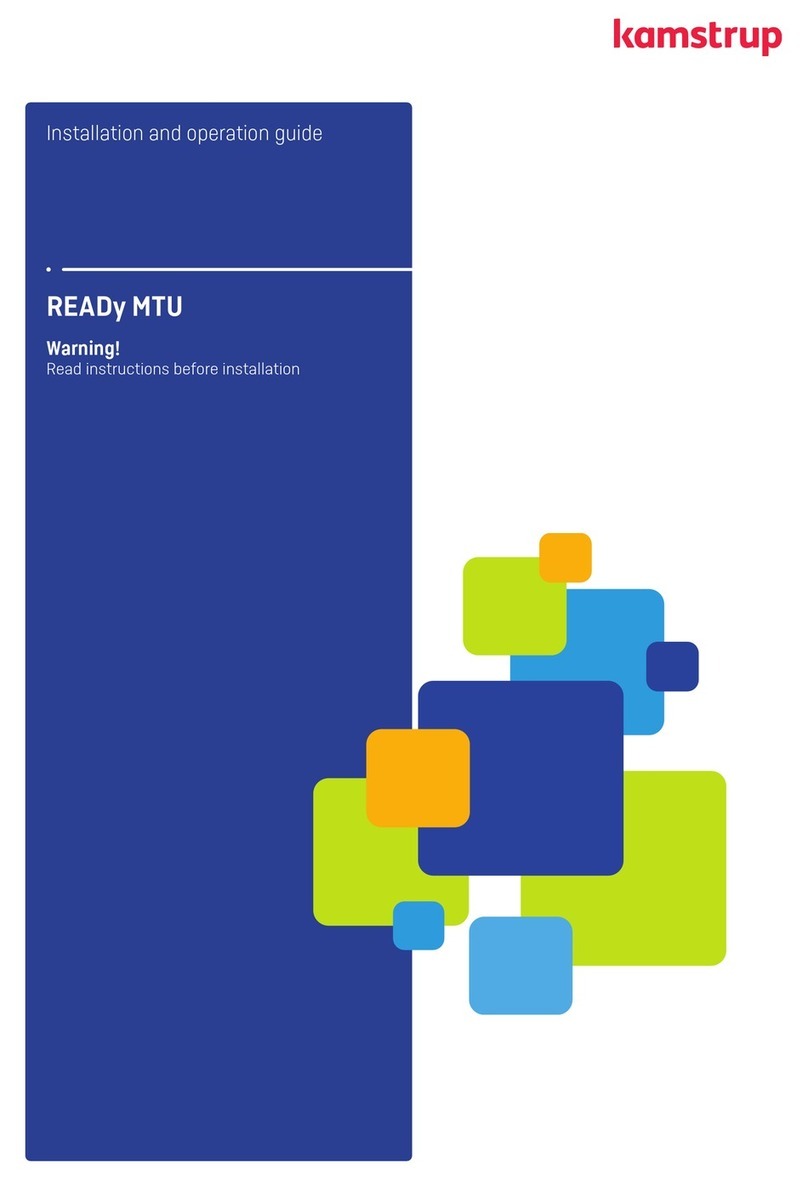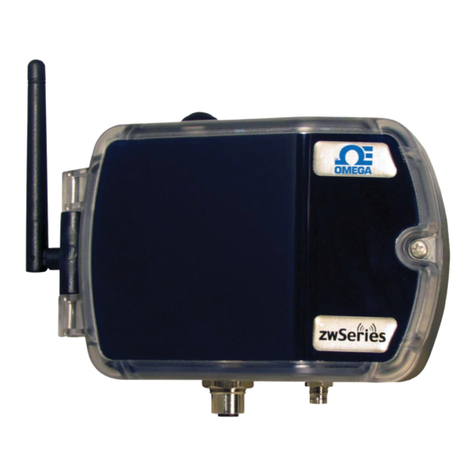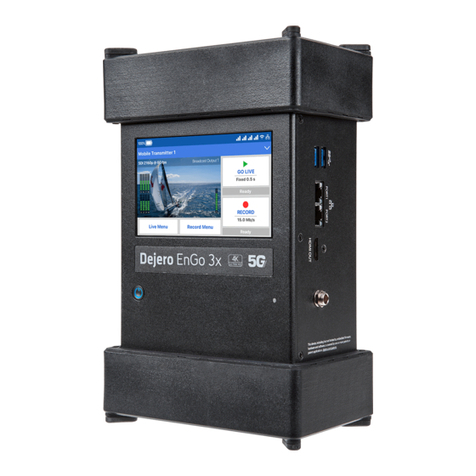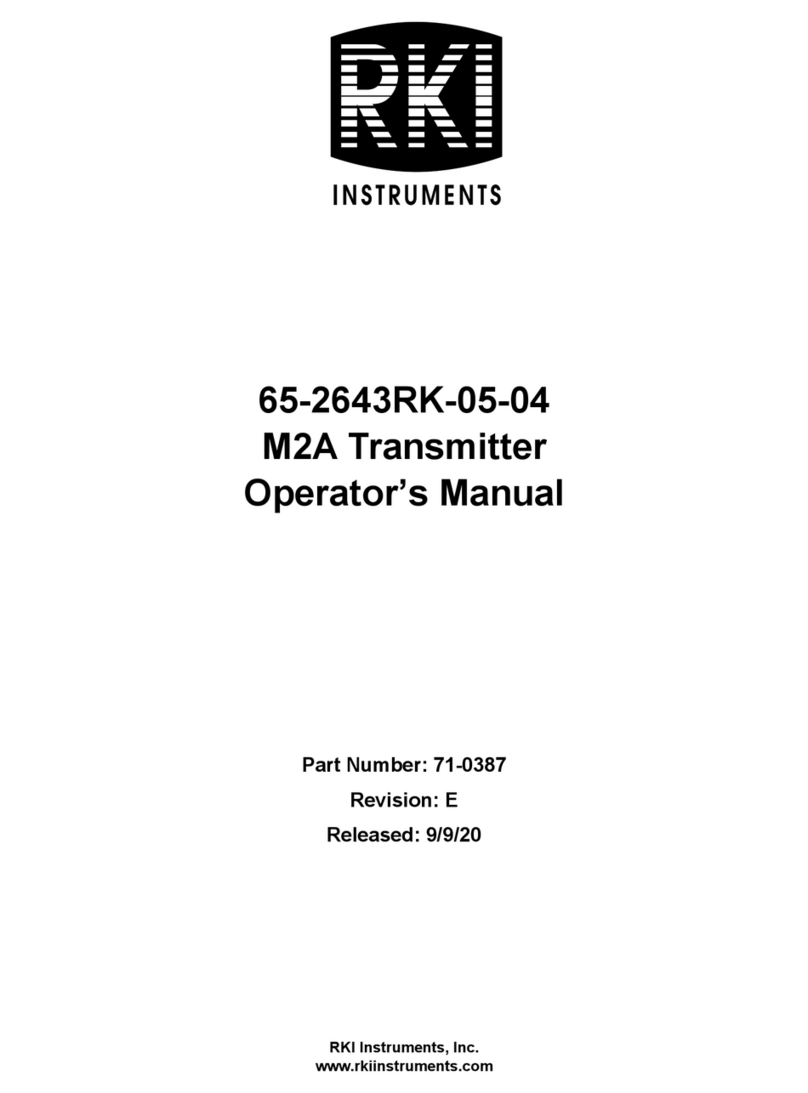5/21/14 05177H © Inovonics, 2014 - www.inovonics.com
EN1210/EN1210-60/EN1210-240 EchoStream®
Single Input Universal Transmitter
Installation Instructions
1 Overview
Note: For UL 2560 installations, refer to the EN6080 Area Control
Gateway Installation Instructions.
1.1 Maximum Number of Repeaters for a UL 2560 Installation
To achieve the 99.99% alarm message reliability required for UL 2560
compliance, system installations must operate within the following limits
for end device and repeater counts.
1.2 Inovonics Wireless Contact Information
If you have any problems with this procedure, contact Inovonics Wireless
technical services:
• Phone: (800) 782-2709.
1.3 Transmitter Components
Figure 1 Transmitter components
1.4 What’s In The Carton
• Three wall mount screws.
• Three wall mount anchors.
• Two selection jumpers.
• One 3.0V lithium battery.
2 Installation and Startup
2.1 Installation Notes
• These products are designed to be installed and maintained by
professional security technicians.
• Products are intended for indoor use.
• Manually test all products weekly.
2.2 Install the Battery
1. Pry the top lip of the mounting bracket up, and lift the bracket off of the
transmitter.
2. Use your thumb to depress the housing release tab on the bottom of
the transmitter; separate the housing.
3. Install the new battery.
4. Press the reset button to initialize the transmitter.
2.3 Select the Frequency Band
EchoStream products are able to use a range of radio frequencies, and
must be configured for your geographic area. This product ships with a
default frequency range of 902-928 MHz for use in North America. If you
are using the product in North America, skip to section 2.4, “Select Input
Type”; if you are using the product in Australia or New Zealand, you will
need to configure the transmitter.
5. Place a selection jumper on the appropriate frequency band selection
pins.
• Place the jumper on the right two pins, marked NZ, to set the
frequency range to 921-928 MHz for New Zealand.
• Place the jumper on the left two pins, marked AU, to set the
frequency range to 915-928 MHz for Australia.
6. Press the reset button to complete configuration.
Caution: When pressing the reset button, make sure you don’t also touch
the frequency band selection pins. Touching the frequency band selection
pins while pressing the reset button can inadvertently set the single input
universal transmitter to the wrong frequency band.
2.4 Select Input Type
The N/O-N/C selection pins allow the choice of a normally open or
normally closed state for the contact circuit wired to the input terminal. The
transmitter is shipped set for normally open, with a selection jumper on the
N/O selections pins. If you are using the product in a normally open state,
skip to section 2.5, “Register the Transmitter”; if you are using the product
in a normally closed state, you will need to configure the transmitter:
7. Remove the selection jumper from the selection pins to select
normally closed.
8. Press the reset button to complete configuration.
2.5 Register the Transmitter
Transmitters must be registered with the system in order to be monitored
and supervised. EN1210 transmitters send a check-in message every
three minutes; EN1210-60 transmitters send a check-in message every
60 minutes; EN1210-240 transmitters send a check-in message every 240
minutes. Each transmitter has a unique factory-programmed identification
number. Refer to the receiver installation instructions for details on
registering a transmitter.
Note: For UL 2560 installations, transmitters must have a minimum
check-in time of 60 minutes.
9. When prompted by the receiver to reset transmitter, press the reset
button.
10. Replace the cover.
11. Test the transmitter by activating each of the conditions and ensuring
an appropriate response.
2.6 Mount the Transmitter
12. Mount the bracket on the wall with the screws provided.
Figure 2 Mount the bracket
13. Clip the transmitter onto the bracket. Hook the bottom catch first,then
press the top into place.
14. As desired, use the third mounting screw to secure the housing
through the screw hole located beneath the battery.
Note: Accessing this screw on an active transmitter requires opening the
housing and removing the battery, causing a tamper condition.
15. Replace the housing lid.
3 US Patent Numbers
• 7,154,866.
• 7,554,932.
• 7,746,804.
• Other patents pending.
4 Specifications
External contacts: NO or NC.
Distance, external contact to transmitter: 3 meters (10 feet) maximum.
Typical battery life: 3-5 years.
Battery type (BAT604): Panasonic CR123A or equivalent.
Power requirement: 3VDC, 60 mA.
Operating environment: -20° to 60°C (-4° to 140°F), noncondensing.
Compatible receiver for UL 2560 installations with EN1210-60: EN6080.
Compatible repeater for UL 2560 installations with EN1210-60: EN5040-
20T.
Note: The EN1210-60 is a supplemental device that can be installed in a
UL 2560 certified system.
Note: Specifications and data are subject to change without notice.
End Devices Maximum
Repeaters
150 397
250 386
350 375
500 360
1000 313
2000 238
3000 184
AFrequency band selection
pins BReset button
CAntenna DInput terminal
EN/O - N/C selection pins FTamper button and spring
